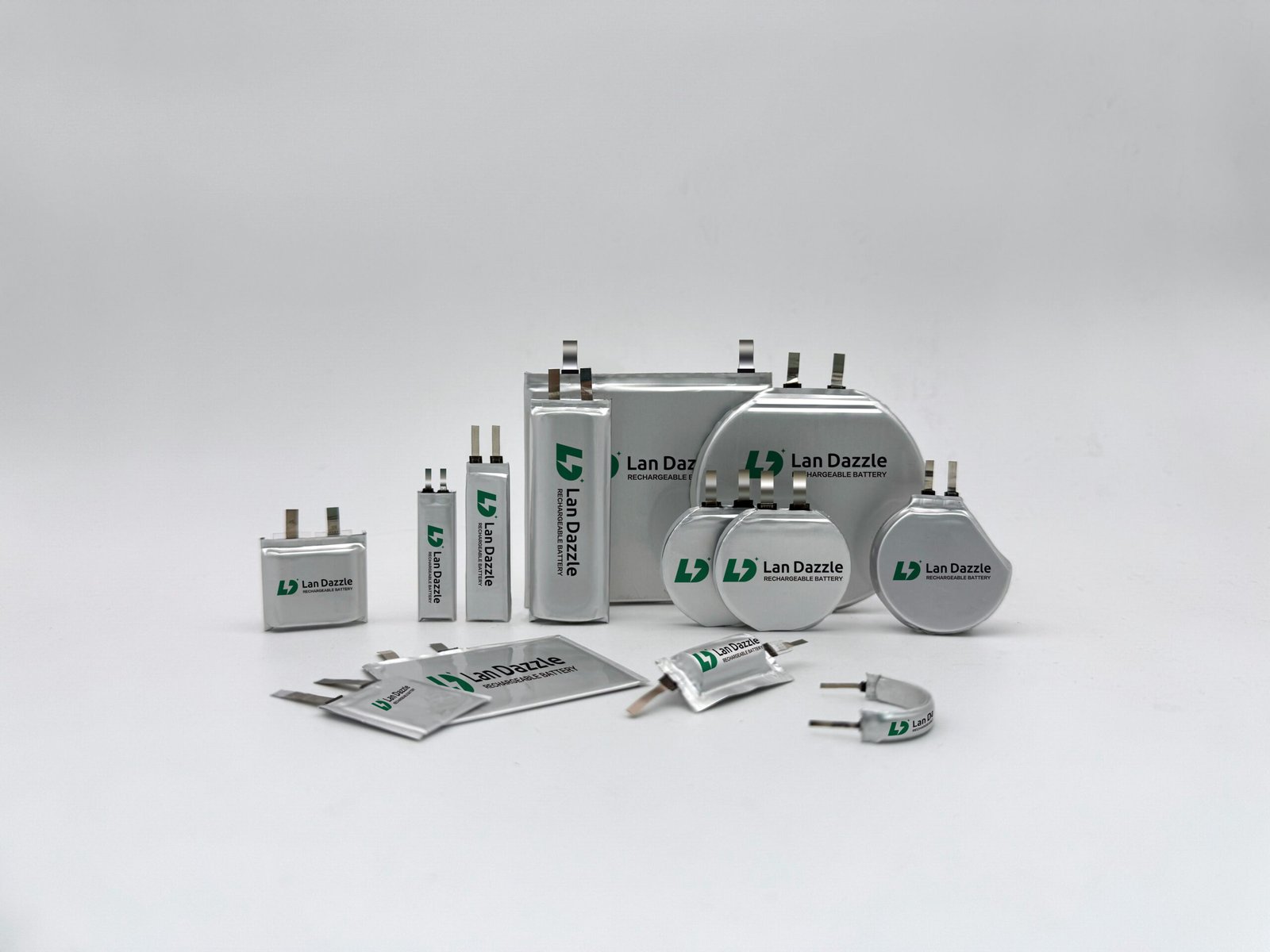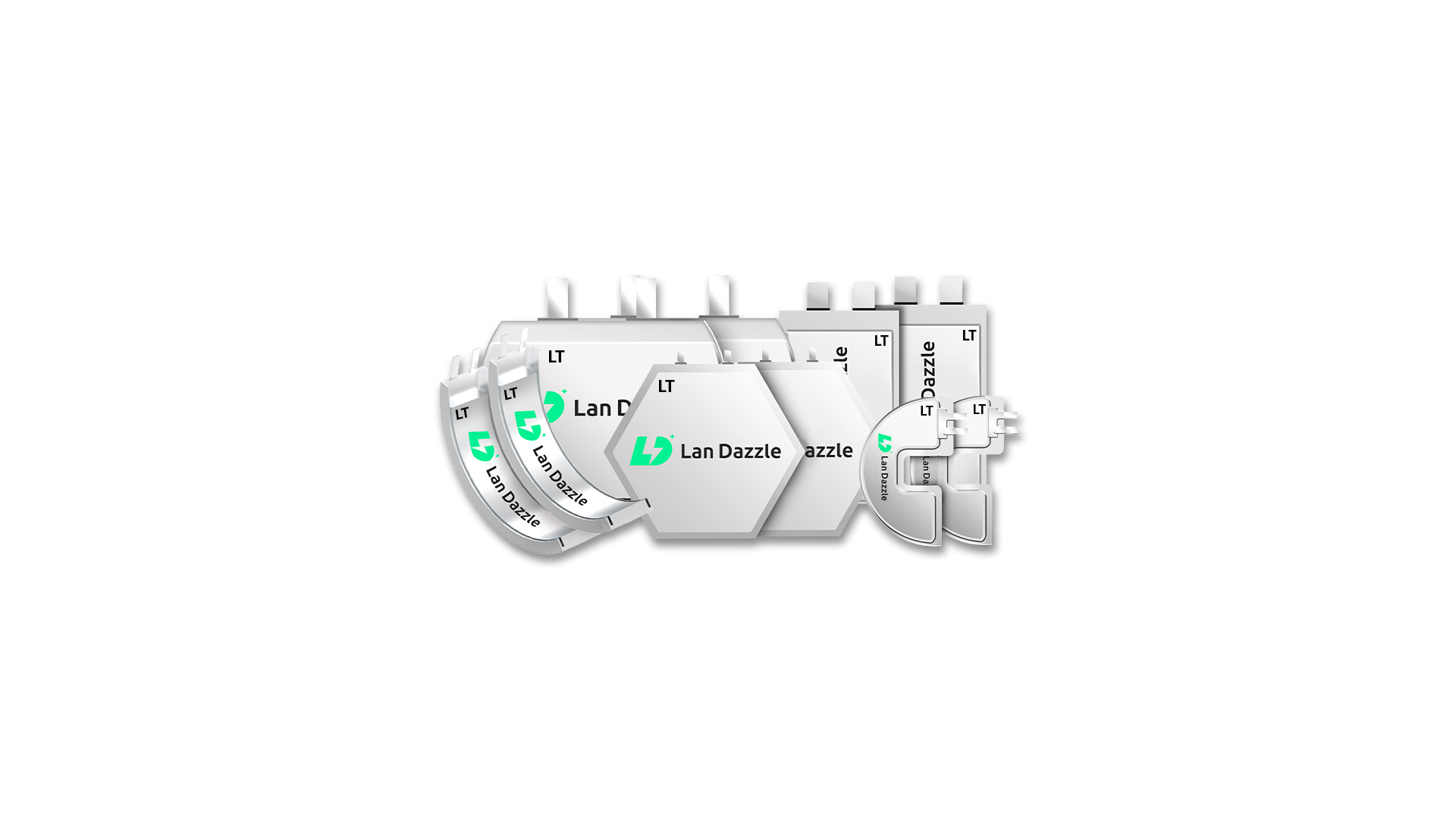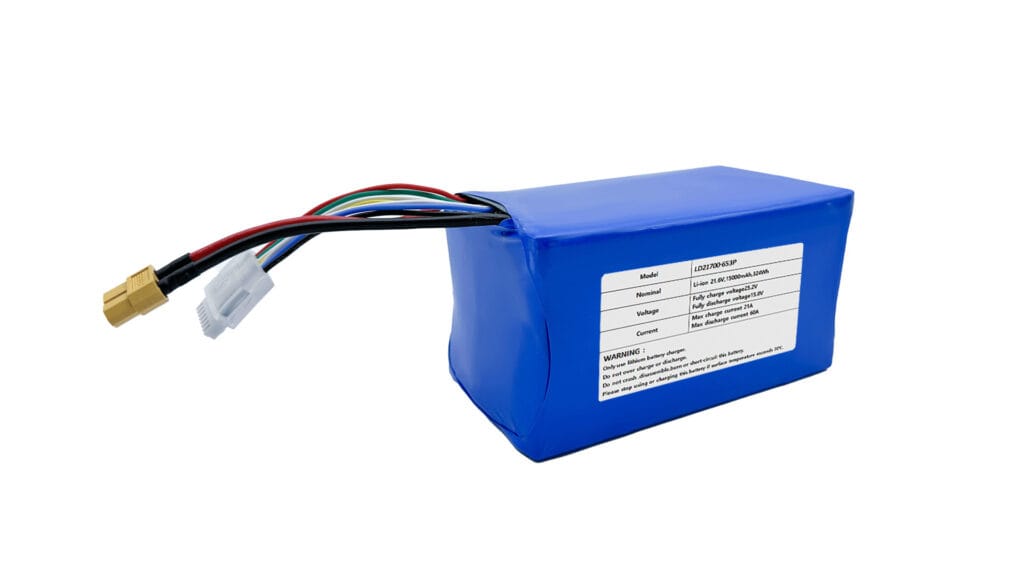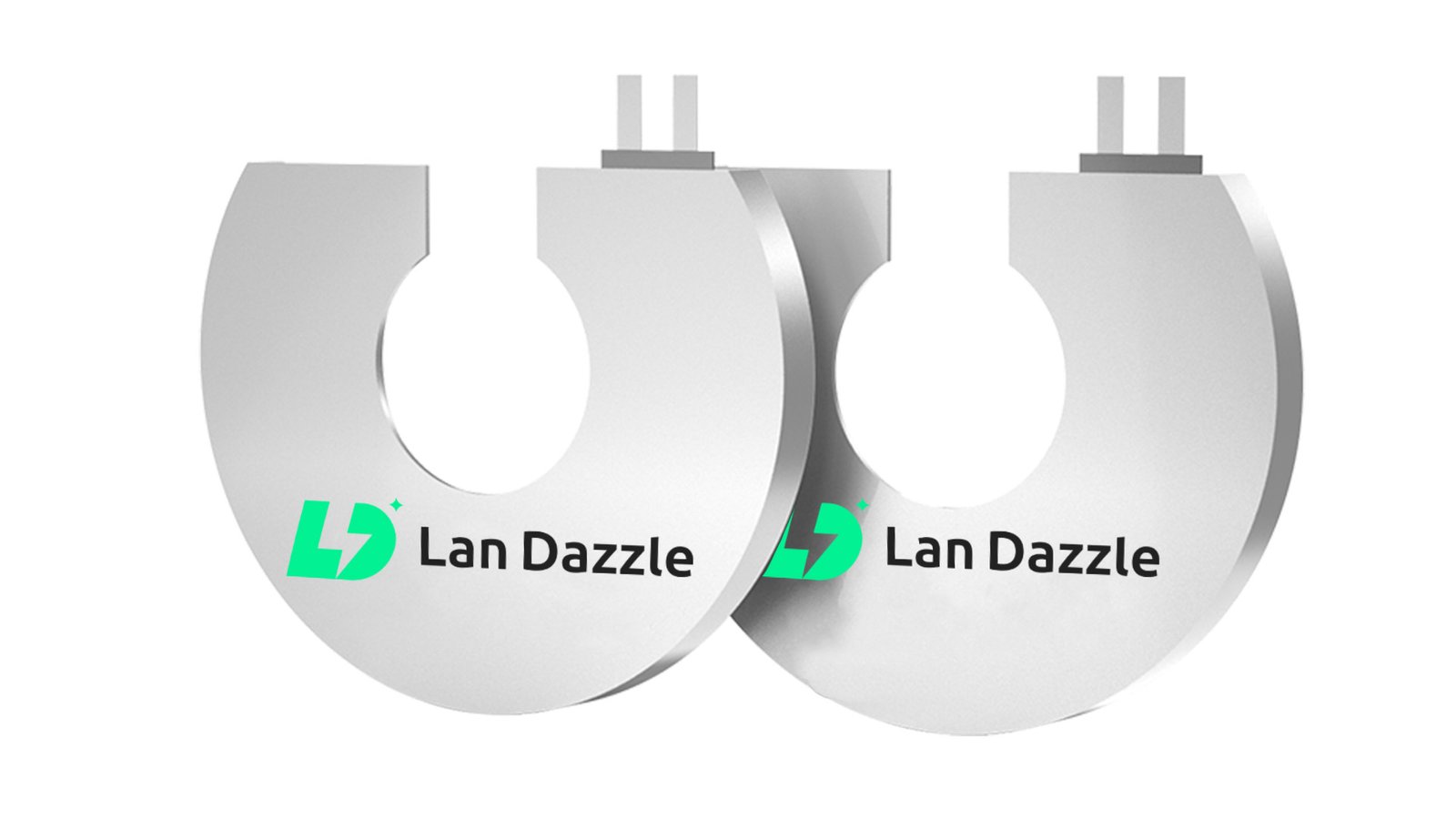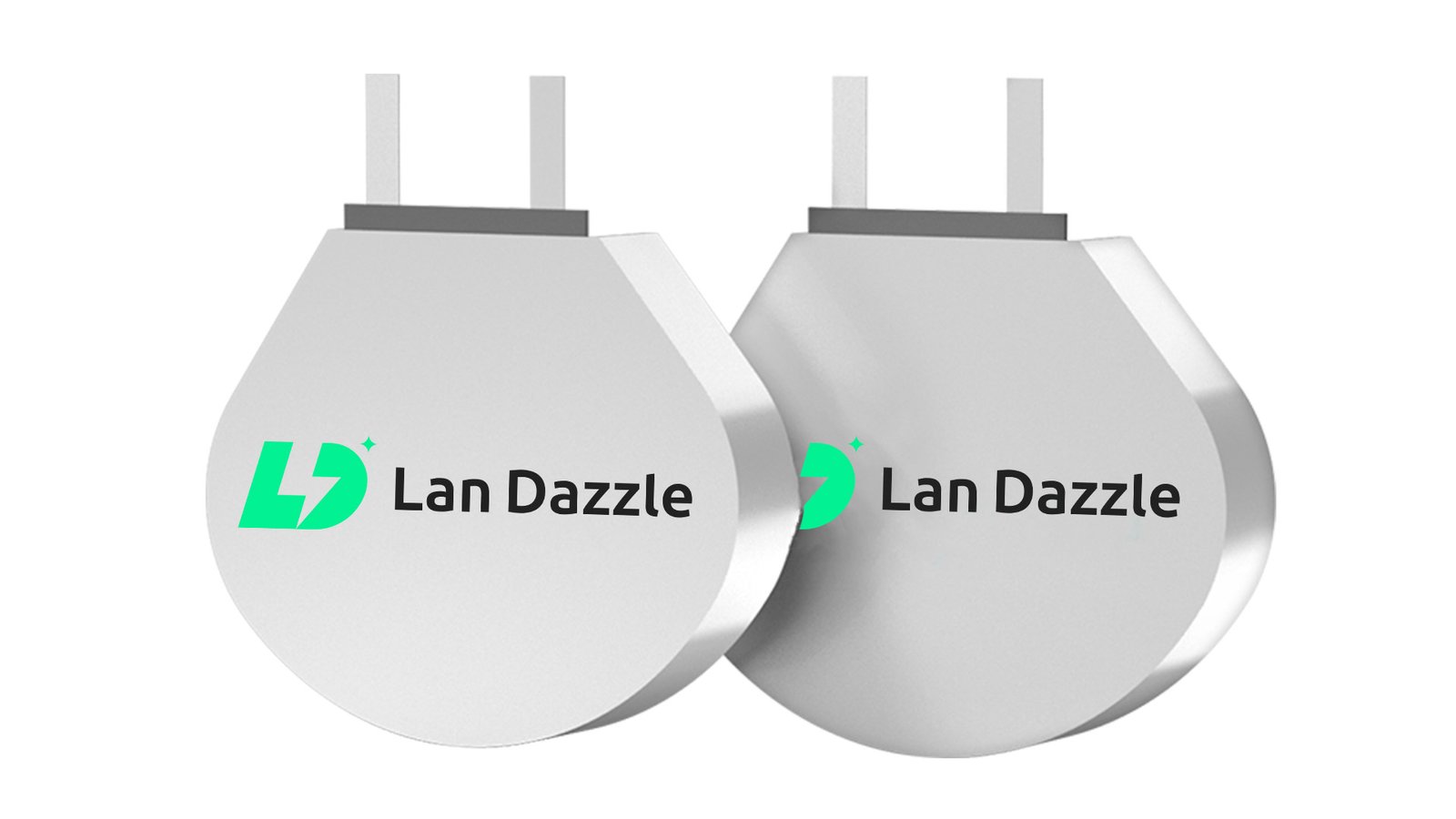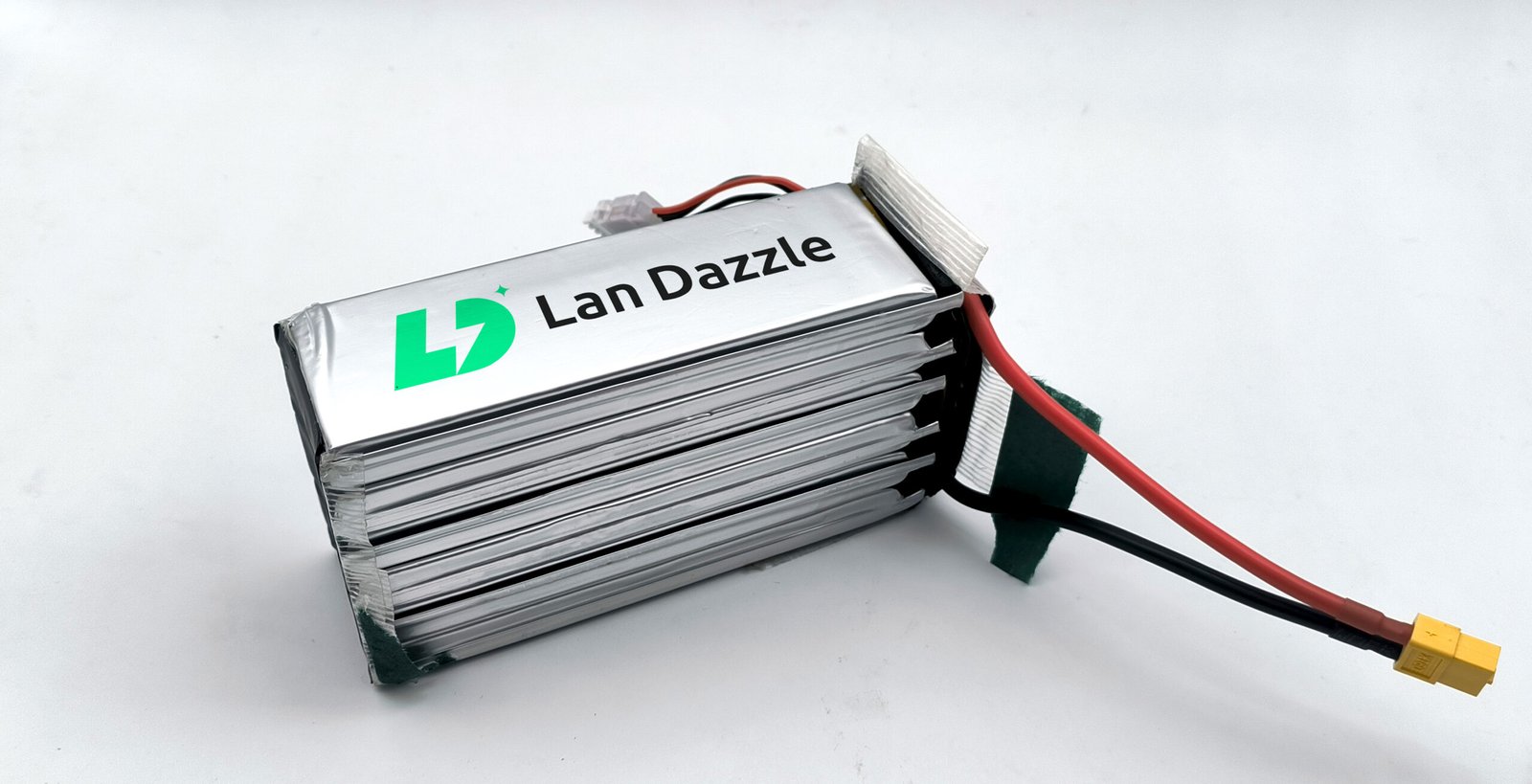In the relentless march of technological progress, our devices are becoming smaller, sleeker, and more seamlessly integrated into our lives. Yet, beneath the polished surfaces and intuitive interfaces, a fundamental constraint often dictates design: the battery. For decades, the rigid, rectangular, or cylindrical forms of traditional batteries limited how product designers could innovate. This era, however, is rapidly giving way to a revolution in power delivery, led by the Cella di batteria ai polimeri di litio sagomata. These remarkable power sources, custom-engineered to fit unique contours and optimize internal space, are unlocking unprecedented design freedom and powering the next generation of miniaturized, high-performance electronics.
This article will delve deep into the technical intricacies, advanced manufacturing processes, diverse real-world applications, and the exciting future potential of shaped Li Polymer battery cells. We’ll explore how these custom power solutions are not just components, but true enablers of innovation, fundamentally shaping the future of portable technology.
Understanding the Core Technology: What are Li Polymer Batteries?
Before we appreciate the “shaped” aspect, it’s essential to understand the fundamental technology at play. Batterie ai polimeri di litio (LiPo) are a sophisticated evolution of the broader lithium-ion family, distinguished by a critical difference in their electrolyte.
Li-Ion vs. Li-Polymer: A Fundamental Distinction
At its core, any lithium-ion battery operates on the principle of lithium-ion intercalation and de-intercalation. During discharge, lithium ions move from the anode through an electrolyte and separator to the cathode, creating an electrical current. During charging, this process reverses.
The crucial differentiator for LiPo lies in its elettrolita. Traditional lithium-ion batteries typically use a liquid organic electrolyte, often necessitating rigid, sealed metal casings (like the familiar cylindrical 18650 cells or prismatic phone batteries) to contain the volatile liquid and maintain structural integrity. In contrast, Li Polymer batteries employ a semi-solid gel or polymer electrolyte, or even a truly solid polymer matrix. This innovative electrolyte, combined with a flexible outer casing – typically an aluminum-laminated film forming a “pouch cell” – offers distinct advantages.
The absence of a free-flowing liquid electrolyte reduces the risk of leakage and provides greater inherent flexibility, making them ideal candidates for custom shapes. While their nominal voltage per cell remains consistent with most lithium-ion variants, typically around 3.7V, their construction method allows for entirely new form factors.
The Anatomy of a Shaped Li Polymer Cell
To appreciate their shape-shifting capabilities, let’s look inside a typical shaped Li Polymer cell. Despite their varied external forms, the internal architecture shares common, precisely engineered components:
- Anodo: Usually made of graphite, this electrode stores lithium ions when the battery is charged and releases them during discharge.
- Catodo: Composed of a lithium metal oxide material (such as Lithium Cobalt Oxide (LCO), Lithium Manganese Oxide (LMO), Nickel Manganese Cobalt (NMC), or Lithium Iron Phosphate (LFP)), the cathode accepts lithium ions during discharge. The choice of cathode material significantly impacts energy density and power characteristics.
- Separatore: A thin, microporous polymer film that physically separates the anode and cathode, preventing direct electrical contact (a short circuit) while allowing lithium ions to pass through its pores.
- Elettrolita polimerico: This is the star of the show for shaped batteries. It’s a gel-like or semi-solid polymer material that acts as the medium for lithium-ion transport between the anode and cathode. Its viscous or solid nature eliminates the need for rigid containment, directly enabling the cell’s flexibility and customizability.
- Collezionisti attuali: Thin metallic foils (copper for the anode, aluminum for the cathode) that collect the electrons from the electrochemical reactions and connect the cell to the external circuit.
- Outer Pouch: The flexible, heat-sealable laminated aluminum film that encapsulates all the internal components. This pliable material is what ultimately allows the battery to be molded, folded, or cut into virtually any desired shape, maximizing the energy stored within irregular device geometries.
This meticulous layered construction, sealed within a pliable pouch, is the technical marvel that gives shaped Li Polymer batteries their transformative power.
The Art of Customization: Manufacturing Shaped Li Polymer Batteries
Creating a battery that precisely fits a non-standard cavity is less about bending a rigid object and more about sophisticated materials science and precision engineering. The manufacturing process for shaped Li Polymer batteries is a testament to advanced capabilities, allowing for unprecedented design freedom.
Precision Engineering for Unique Form Factors
The inherent “soft” pouch construction of LiPo cells is the foundation for their customizability. Unlike rigid cylindrical or prismatic cells, which are confined to their predefined dimensions, LiPo cells can be designed in an astonishing variety of forms: ultra-thin sheets, gracefully curved profiles, intricate L-shapes, circular discs, or even complex custom-molded designs that perfectly conform to a device’s internal contours.
Achieving these unique shapes demands highly specialized manufacturing steps:
- Electrode Material Preparation: The process begins with meticulous mixing of active materials, binders, and conductive additives into a slurry, which is then precisely coated onto the current collector foils (copper for anode, aluminum for cathode).
- Precision Cutting & Stamping: This is where the magic of shaping truly begins. Unlike standard rectangular cuts, electrodes and separators are precision laser-cut or die-stamped into the exact, intricate geometries required for the custom battery. This step demands extreme accuracy to ensure consistent performance and prevent internal shorts.
- Advanced Stacking/Folding Techniques: The custom-cut electrode and separator layers are then carefully assembled. Techniques like Z-folding are commonly employed for multi-layer cells, where the separator is continuously folded between the anode and cathode layers, creating a compact, robust, and highly efficient stack that can then be further shaped. For very specific custom designs, automated robotic systems are used for highly intricate stacking and alignment.
- Pouch Formation & Sealing: The stacked cell assembly is then placed into the pre-formed flexible laminated aluminum pouch. The pouch is then meticulously heat-sealed around the edges, often in a vacuum to prevent air ingress. This sealing process is critical; even a microscopic flaw can compromise the battery’s integrity and safety.
The entire process, particularly the precision cutting and sealing, operates under extremely tight tolerances. This ensures that each custom battery not only fits perfectly but also delivers consistent and reliable performance, safeguarding against potential issues like internal resistance variations or localized heating. Modern shaped LiPo cells can be incredibly thin, with some designs achieving sub-millimeter thickness, opening doors for radically slim product designs.
Critical Manufacturing Processes & Quality Assurance
Manufacturing shaped Li Polymer batteries isn’t just about cutting and sealing; it involves a series of critical post-assembly processes and stringent quality control measures to ensure safety, longevity, and optimal performance.
- Electrolyte Injection: After the cell is stacked and mostly sealed, the precise amount of gel or polymer electrolyte is injected into the pouch. This is often done under vacuum conditions to ensure complete saturation of the electrodes and separator while eliminating air bubbles, which could otherwise lead to performance degradation or safety issues.
- Formation Cycling: This is a crucial initial charge and discharge process. During formation, a stable Solid Electrolyte Interphase (SEI) layer forms on the anode surface. This SEI layer is vital for the battery’s long-term stability, cycle life, and safety. The formation parameters (current, voltage, temperature) are carefully controlled to optimize this critical layer.
- Degassificazione: Gases can be generated during the initial formation process. These gases are carefully removed from the pouch through a degassing step, which is essential to prevent cell swelling (often referred to as “puffing”) and maintain the battery’s designed shape and performance over time.
- Test rigorosi: Every shaped LiPo cell undergoes comprehensive testing. This includes:
- Test di capacità: Verifying the actual energy storage capacity (mAh).
- Internal Resistance (IR) Measurement: Assessing the cell’s efficiency and health.
- Discharge Curve Analysis: Ensuring stable voltage output under various loads.
- Comprehensive Safety Tests: Including short circuit tests, overcharge tests, over-discharge tests, and mechanical stress tests (e.g., puncture tests) to comply with international safety standards like UL, CE, and UN38.3.
The entire process for shaped LiPo cells is often carried out in highly controlled cleanroom environments to prevent contamination, which can severely impact battery performance and safety. The reliance on advanced automation, robotics, and sophisticated vision systems in modern manufacturing facilities is paramount for achieving the high volume and unwavering precision required for these complex, custom-designed power sources.
Technical Advantages & Performance Metrics
The intricate design and manufacturing processes of shaped Li Polymer batteries translate directly into a host of technical advantages that are critical for modern electronic devices.
Unlocking Design Freedom & Miniaturization
The most evident advantage of shaped LiPo batteries is their ability to liberate product designers from the shackles of conventional battery geometries. By conforming to almost any internal cavity, these batteries enable the creation of:
- Thinner and Lighter Devices: By spreading the battery volume across a wider, thinner area, device profiles can be dramatically reduced, making gadgets more portable and aesthetically pleasing.
- Ergonomic and Aesthetically Pleasing Designs: Shaped batteries allow devices to follow the natural contours of the human body (for wearables) or fit seamlessly into unique product housings, improving user comfort and overall design appeal.
- Maximized Internal Space Utilization: Instead of leaving empty gaps around a rectangular battery, a custom-shaped LiPo can fill virtually every available millimeter, maximizing battery capacity within a given device footprint. This is crucial for miniaturization trends, where every cubic millimeter counts.
Consider a sleek smartwatch, an ultra-thin laptop, or a discreet medical patch; their innovative forms are often made possible only by a battery custom-tailored to their unique dimensions.
Energy Density, Power Density, and Cycle Life
Beyond mere shape, shaped LiPo batteries deliver robust performance metrics:
- Alta densità energetica: This refers to the amount of energy stored per unit of mass (Wh/kg) or volume (Wh/L). Modern shaped LiPo cells typically achieve energy densities ranging from 100 to 260 Wh/kg (and often higher for specialized applications), allowing devices to operate for extended periods on a single charge. This is a paramount factor for consumer electronics where battery life is a key differentiator.
- High Power Density: This measures how quickly a battery can deliver energy (its ability to provide high current). For applications like racing drones or power-hungry VR headsets that require sudden bursts of power, high power density (expressed as C-rate) is critical. Shaped LiPo batteries can be engineered to deliver impressive C-rates, enabling responsive and robust device performance.
- Excellent Cycle Life: This indicates the number of charge and discharge cycles a battery can undergo before its capacity significantly degrades (typically to 80% of its original capacity). Reputable shaped LiPo cells often achieve 300-500 cycles or more under optimal conditions. Factors influencing cycle life include depth of discharge, operating temperature, and charging/discharging habits. Advanced manufacturing and material science contribute significantly to extending this lifespan.
Enhanced Safety Features and Thermal Management
Safety is paramount for any battery, especially with the widespread use of lithium chemistries. Shaped LiPo batteries incorporate several features to mitigate risks:
- Reduced Leakage & Improved Thermal Stability: The gel or semi-solid polymer electrolyte is inherently less prone to leakage than liquid electrolytes. Furthermore, the polymer matrix generally provides improved thermal stability, reducing the risk of internal short circuits or localized hot spots that can escalate into thermal runaway.
- Integrated Battery Management Systems (BMS): Modern shaped LiPo battery packs nearly always include a sophisticated BMS. This electronic circuit actively monitors critical parameters such as:
- Protezione da sovraccarico: Prevents the battery from being charged beyond its safe voltage limit.
- Over-discharge Protection: Stops discharge before the voltage drops too low, which can permanently damage the cell.
- Overcurrent Protection: Cuts off power if the current draw exceeds safe limits.
- Short-Circuit Protection: Immediately disconnects the battery in case of a direct short.
- Monitoraggio della temperatura: Sensors detect abnormal temperature increases, allowing the BMS to take corrective action, such as halting charging or discharge.
- Advanced Thermal Management Strategies: Given the tight integration of shaped batteries into compact devices, effective heat dissipation is crucial. This involves not only the inherent thermal properties of the battery materials but also intelligent device design, including heat sinks, thermal pads, and sometimes even active cooling solutions, all working in concert with the BMS to maintain optimal operating temperatures for longevity and safety. Many cells also integrate pressure relief vents or Current Interrupt Devices (CIDs) as fail-safe mechanisms.
Diverse Applications Across Industries
The unique attributes of shaped Li Polymer battery cells have made them indispensable across a rapidly expanding range of industries, enabling products that were once confined to science fiction.
Consumer Electronics: The Driving Force
The consumer electronics industry has been the primary catalyst for the widespread adoption of shaped LiPo batteries. In devices where sleekness, lightness, and extended battery life are paramount, these batteries are a game-changer:
- Smartphones & Tablets: Enabling ultra-thin profiles and maximizing battery capacity by conforming to internal layouts, even around components.
- Laptops: Allowing for incredibly slim designs in ultrabooks and convertible laptops.
- Wireless Earbuds & Portable Speakers: Facilitating compact, ergonomic designs for personal audio.
- Gaming Controllers: Custom shapes fit intricate controller housings, enhancing ergonomics and battery duration for immersive gaming experiences.
Wearables & IoT: Powering the Connected World
The explosive growth of wearables and the Internet of Things (IoT) is arguably where shaped LiPo batteries shine brightest. These devices often demand highly specific, non-standard power solutions:
- Smartwatches & Fitness Trackers: Batteries are curved to fit the wrist, maximizing capacity while maintaining a comfortable, low-profile design.
- AR/VR Headsets: Custom shapes distribute weight evenly and fit complex optical and sensor components.
- Smart Clothing & Smart Rings: Enabling nearly invisible integration of power sources into textiles or jewelry.
- Medical Patches & Environmental Sensors: Tiny, sometimes flexible, batteries are critical for discreet, long-term monitoring devices. The market for these devices continues to expand rapidly, projected to see strong growth in the coming years.
Medical Devices: Precision and Reliability
In the medical field, the requirements for power sources are exceptionally stringent, demanding not only precise sizing but also unparalleled reliability and safety. Shaped LiPo batteries meet these rigorous criteria:
- Dispositivi impiantabili: From pacemakers to neural stimulators, custom-shaped batteries ensure minimal invasiveness and long operational lives.
- Strumenti diagnostici portatili: Enabling compact, ergonomic designs for point-of-care diagnostics.
- Smart Prosthetics & Hearing Aids: Tiny, custom-molded batteries are essential for fitting into small, intricate prosthetic limbs or almost invisible hearing aids, providing reliable power for extended periods.
Drones & Robotics: High Power, Low Weight
For applications requiring both high power output and minimal weight, shaped LiPo batteries are the preferred choice:
- Droni da corsa: Their high C-ratings allow for rapid acceleration and sustained high-speed flight, while their lightweight nature contributes to agility.
- Micro-Robotics: Custom-shaped batteries can be integrated into tiny robotic platforms, enabling complex movements and longer operational times for tasks like inspection or exploration.
- Specialized UAVs: For surveillance or delivery drones, custom batteries optimize internal space for payloads and extend flight durations. The growth of the drone market continues to drive innovation in high-power, lightweight battery solutions.
Future Trends and Innovations
The journey of shaped Li Polymer battery technology is far from over. Ongoing research and development promise even more revolutionary advancements that will further redefine the capabilities of portable electronics.
Advancements in Materials and Chemistry
The core of future innovation lies in pushing the boundaries of materials science:
- Next-Generation Polymer Electrolytes: Researchers are developing polymer electrolytes with even higher ionic conductivity, allowing for faster charging and better performance across wider temperature ranges.
- Anodi di silicio: Current graphite anodes are reaching their theoretical capacity limits. Integrating silicon into anodes promises significantly higher energy density (potentially 20-40% increase), allowing for smaller batteries with longer runtimes, although challenges with silicon expansion during cycling are still being addressed.
- Solid-State Polymer Batteries: This is arguably the “holy grail” of battery technology. By replacing all liquid components with a solid polymer electrolyte, these batteries promise ultimate safety (no flammable liquid electrolyte), even higher energy densities, longer cycle life, and potentially ultra-fast charging capabilities. While still largely in the R&D phase for mass production, thin-film solid-state batteries are already making inroads into specific micro-device applications.
Smart Batteries and Sustainable Practices
Beyond the core chemistry, the future of shaped LiPo batteries will also be defined by enhanced intelligence and environmental responsibility:
- Integration with AI: Future Battery Management Systems (BMS) will likely leverage Artificial Intelligence (AI) for predictive maintenance, optimizing charging patterns based on user behavior, and providing real-time health diagnostics, extending battery lifespan and enhancing user experience.
- Enhanced BMS Features: These systems will become even more sophisticated, offering advanced balancing techniques, more precise state-of-charge (SoC) and state-of-health (SoH) estimations, and potentially adaptive charging profiles.
- Sustainable Practices: As the demand for batteries grows, so does the imperative for sustainability. Efforts are focused on developing more efficient and environmentally friendly recycling methods for LiPo cells, ensuring that valuable materials like lithium, cobalt, and nickel can be recovered. The industry is increasingly moving towards a circular economy model, minimizing environmental impact throughout the battery lifecycle.
Conclusione
Il Cella di batteria ai polimeri di litio sagomata represents a pivotal advancement in energy storage, transcending the limitations of traditional, rigid power sources. By offering unprecedented design flexibility, exceptional energy and power density, and robust safety features, these custom-engineered batteries have fundamentally enabled the miniaturization and ergonomic evolution of modern electronics. From the sleek curves of smartwatches to the life-saving precision of medical implants, shaped LiPo cells are quietly powering the innovations that define our connected world.
As material science progresses and manufacturing techniques become even more refined, the capabilities of shaped LiPo batteries will continue to expand. They are not merely components but crucial enablers, continuing to literally shape the future of portable power and empowering the creation of increasingly sophisticated, integrated, and intelligent devices. The revolution in battery design is here, and it’s taking on every shape imaginable.
A Lan Dazzlesiamo specializzati nella progettazione e nella produzione di custom shaped li polymer battery cell tailored to your unique product requirements. Whether you’re developing anelli intelligenti, AR/VR devices, medical wearables, or any other compact electronics that demand high energy density and complex form factors, our engineering team is ready to support your innovation.
With advanced stacking technology, precision molding, and extensive experience in shaped battery manufacturing, we deliver solutions that balance performance, reliability, and flexibility.
📩 Contattateci oggi stesso a info@landazzle.com to discuss your custom shaped battery project.
